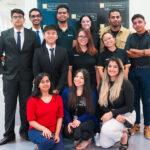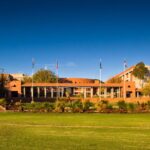Mark Woffenden has been appointed Executive Director of Curtin University of Technology’s new Resources and Chemistry Precinct.
Mark Woffenden plans to unite government and industry, protect and grow Western Australia’s resources industry and save the environment – no mean feat for a self-proclaimed ‘non-academic’.
‘We continue to make break throughs in areas that have long been seen as fairly staid – there are a lot of frontiers to go yet.’
No doubt Mr Woffenden’s 30 years experience in the mineral industry across organisations including Rio Tinto, Hamersley Iron, Comalco Aluminium and KPMG Consulting and, most recently, at the Curtin supported AJ Parker Centre, will be useful with his plans for Curtin University of Technology’s Resources and Chemistry Precinct.
The Deputy Chair of the Cooperative Research Centre Association committee is the inaugural Executive Director of the Precinct, which is currently under construction at the southern end of Curtin’s Bentley campus.
The Precinct will develop new ways to extract metals from material currently considered not economically viable and aims to keep sustainability at the core of its endeavours.
‘Curtin’s involved in some of the very leading edge work in hydrometallurgy,’ he said.
‘We continue to make break throughs in areas that have long been seen as fairly staid – there are a lot of frontiers to go yet.’
While Mr Woffenden thinks the current China and India fuelled resources boom will continue for ‘quite a long time’, he’s keeping his eye on the horizon to secure Australia’s enduring minerals industry.
‘We shouldn’t lose sight of the fact that other countries, particularly in South America, are strong – they’re filling as much of the market as they can and they have some very high quality mineral assets,’ he said.
‘While Australia’s done very well, some of our mineralisation is actually not the best quality in the world.
‘We’ve achieved our position by applying wonderful science and technology to mining and processes. If we want to continue to enjoy the wealth and benefits that many people are deriving from the minerals industry then we need to make sure it’s kept well looked after.’
Mr Woffenden, a member of both the Australasian Institute of Mining and Metallurgy and the Premier’s Science and Innovation Council of Western Australia, will start at Curtin on June 16 2008.


